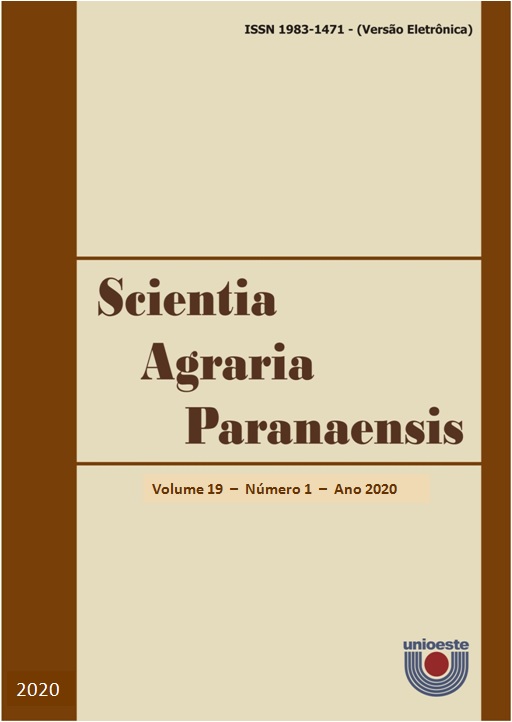Height, volume and form factor equations for Tectona grandis L.f. in Alta Floresta (MT)
DOI:
https://doi.org/10.18188/sap.v19i1.21548
Agências de fomento
Resumo
Studies on allometric models are essential for quantifying the potential of a stand, especially when the objective is to know the wood stock through estimates. This study aimed to select height, volume and artificial form factor equations for a teak stand with data from a sample with 81 trees at 96 months in different diameter classes. The correlation analysis was performed between the variables total height, diameter with and without bark at 1.30 m soil height (dbhcc and dbhsc), total volume with and without bark (VTcc and VTsc) and artificial form factor with and without bark (ffcc and ffsc), using the Pearson coefficient. Six models were evaluated for each category: height, volume and artificial form factor, which were selected by the following criteria: analysis of variance, adjusted coefficient of determination, standard error of estimate, Akaike information criterion and graphical analysis of residues. The selected equations were validated by applying the L & O test. The variables dbhcc, dbhsc, HT, VTcc and VTsc presented significant correlations, ranging from moderate to very strong, the others presented weak correlation. The model that presented the best relation of total height to diameter was the model of Azevedo and contributors. For the total volume with and without bark, Schumacher and Hall model in its logarithmic form was the one that presented the best results. The adjusted models for artificial form factor did not present satisfactory results and, therefore, the use of average form factor is recommended. The mean form factor values by diameter class ranged from 0.4498 to 0.7139 and 0.4480 to 0.7075 for diameter with and without bark, respectively.Downloads
Publicado
23-05-2020
Como Citar
MORAIS, A. C. de; SOARES, T. S.; CRUZ, E. S. Height, volume and form factor equations for Tectona grandis L.f. in Alta Floresta (MT). Scientia Agraria Paranaensis, [S. l.], v. 1, n. 1, p. 27–37, 2020. DOI: 10.18188/sap.v19i1.21548. Disponível em: https://saber.unioeste.br/index.php/scientiaagraria/article/view/21548. Acesso em: 24 dez. 2025.
Edição
Seção
Artigos Científicos
Licença
Aviso de Direito Autoral Creative Commons
Política para Periódicos de Acesso Livre
Autores que publicam nesta revista concordam com os seguintes termos:
1. Autores mantém os direitos autorais e concedem à revista o direito de primeira publicação, com o trabalho simultaneamente licenciado sob a Licença Creative Commons Attribution que permite o compartilhamento do trabalho com reconhecimento da autoria e publicação inicial nesta revista.2. Autores têm autorização para assumir contratos adicionais separadamente, para distribuição não-exclusiva da versão do trabalho publicada nesta revista (ex.: publicar em repositório institucional ou como capítulo de livro), com reconhecimento de autoria e publicação inicial nesta revista.
3. Autores têm permissão e são estimulados a publicar e distribuir seu trabalho online (ex.: em repositórios institucionais ou na sua página pessoal) a qualquer ponto antes ou durante o processo editorial, já que isso pode gerar alterações produtivas, bem como aumentar o impacto e a citação do trabalho publicado (Veja O Efeito do Acesso Livre).
Licença Creative Commons
Esta obra está licenciada com uma Licença Creative Commons Atribuição-NãoComercial-CompartilhaIgual 4.0 Internacional, o que permite compartilhar, copiar, distribuir, exibir, reproduzir, a totalidade ou partes desde que não tenha objetivo comercial e sejam citados os autores e a fonte.


